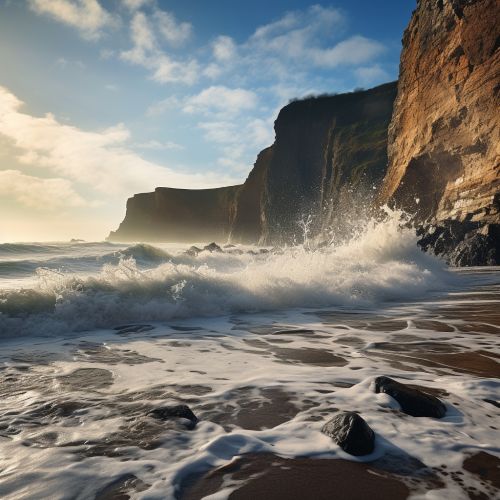Semidiurnal Tide
Introduction
Semidiurnal tides are a type of tide that experience two high tides and two low tides of approximately equal size over a lunar day, a period of approximately 24 hours and 50 minutes. This tidal pattern is prevalent in many locations worldwide, including the Atlantic coasts of North America and Europe, and is a fundamental aspect of the Earth's complex oceanographic systems.
Characteristics
Semidiurnal tides are characterized by their twice-daily occurrence. Unlike mixed tides, which also occur twice daily but have significantly different high and low water levels, semidiurnal tides have high and low tides that are approximately equal in size. This regularity in tidal patterns is due to the gravitational interactions between the Earth, moon, and sun.


Causes
The primary cause of semidiurnal tides is the gravitational pull of the moon and the sun on the Earth's oceans. This gravitational force causes the water in the oceans to bulge out in the direction of the moon and sun, creating a high tide. At the same time, on the opposite side of the Earth, another high tide occurs due to the inertia of the water moving away from the moon and sun. As the Earth rotates, these bulges of water move around the planet, creating two high tides and two low tides each day.
Effect of Lunar Cycle
The intensity of semidiurnal tides can be influenced by the lunar cycle. During a full moon or new moon, when the Earth, moon, and sun are aligned, the gravitational forces of the moon and sun combine to create especially high and low tides, known as spring tides. Conversely, during the first and third quarters of the moon, when the moon and sun are at right angles to each other, their gravitational forces partially cancel each other out, resulting in lower high tides and higher low tides, known as neap tides.
Geographic Distribution
Semidiurnal tides are most common along the Atlantic coasts of North America and Europe. However, they can also be found in other locations around the world, including parts of the Indian and Pacific Oceans. The specific tidal pattern at any given location is determined by a variety of factors, including the shape and depth of the ocean floor, the coastline's shape, and the water's temperature and salinity.
Impact on Marine Life
Semidiurnal tides have a significant impact on marine life. The regular movement of water can influence the distribution of nutrients and oxygen in the ocean, affecting the growth and survival of marine organisms. Furthermore, many marine species have evolved to synchronize their feeding and reproductive behaviors with the tidal cycle, taking advantage of the influx of water and nutrients that high tide brings.
Human Interactions
Humans have long been aware of and have adapted to the semidiurnal tidal cycle. For example, in coastal communities, fishing and shellfish harvesting activities are often timed to coincide with low tide, when marine life is more accessible. Additionally, some forms of renewable energy, such as tidal power, take advantage of the regular movement of water caused by semidiurnal tides.
